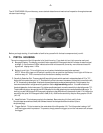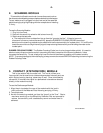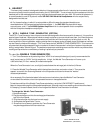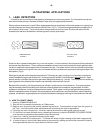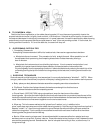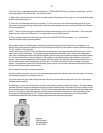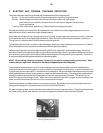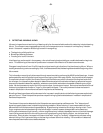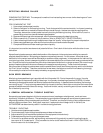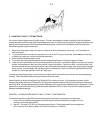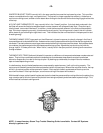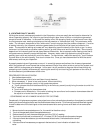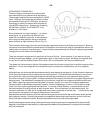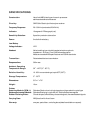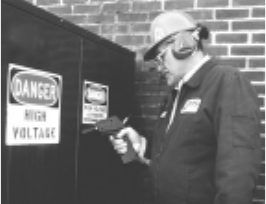
2. ELECTRIC ARC, CORONA, TRACKING DETECTION
There are three basic electrical problems that are detected with the Ultraprobe 500:
Arcing: An arc occurs when electricity flows through space. Lightning is a good example.
Corona: When voltage on an electrical conductor, such as an antenna or high voltage
transmission line exceeds the threshold value, the air around it begins to ionize to form a
blue or purple glow.
Tracking: Often refered to as "baby arcing", follows the path of damaged insulation.
Although theoretically the Ultraprobe 100 can be used in low, medium and high voltage systems, most of the
applications tend to be in medium and high voltage systems.
When electricity escapes in high voltage lines or when it "jumps" across a gap in an electrical connection, it disturbs
the air molecules around it and generates ultrasound. Most often this sound will be perceived as a crackling or
"frying" sound, in other situations it will be heard as a buzzing sound.
Typical applications include: insulators, cable, switchgear, buss bars, relays, contactors, junction boxes. In substa-
tions, components such as insulators, transformers and bushings may be tested.
Ultrasonic testing is often used at voltages exceeding 2,000 volts, especially in enclosed switchgear. Since ultra-
sound emissions can be detected by scanning around door seams and air vents, it is possible to detect serious faults
such as arcing, tracking and corona without taking the switchgear off line to perform an infrared scan. However, it
is recommended that both tests be used with enclosed switchgear.
NOTE: When testing electrical equipment, follow all your plant or company safety procedures. When
in doubt, ask your supervisor. Never touch live electrical apparatus with the Ultraprobe.
-8-
The method for detecting electric arc and corona leakage is similar to the procedure outlined in leak detection.
Instead of listening for a rushing sound, a user will listen for a crackling or buzzing sound. In some instances, as in
trying to locate the source of radio/TV interference or in substations, the general area of disturbance may be located
with a gross detector such as a transistor radio or a wide-band interference locator. Once the general area has been
located, the scanning module of the Ultraprobe is utilized with a general scan of the area. The sensitivity is re-
duced if the signal is too strong to follow. When this occurs, reduce the sensitivity to get a mid-line reading on the
meter and continue following the sound until the loudest point is located.
Determining whether a problem exists or not is relatively simple. By comparing sound quality and sound levels
among similar equipment, the problem sound will tend to be quite different.
On lower voltage systems, a quick scan of bus bars often will pick up a loose connection. Checking junction boxes
can reveal arcing. As with leak detection, the closer one gets to the emission site, the louder the signal.
Test switchgear, transformers, etc.
for arcing, tracking & corona.




